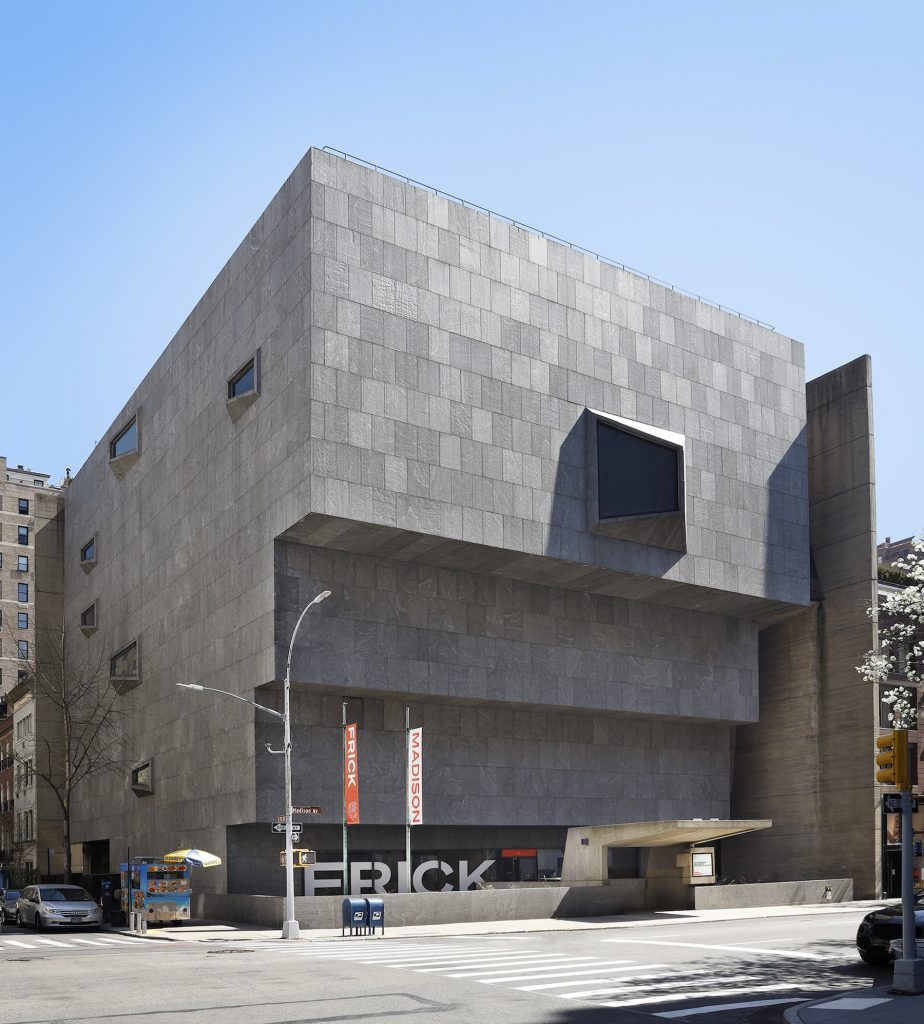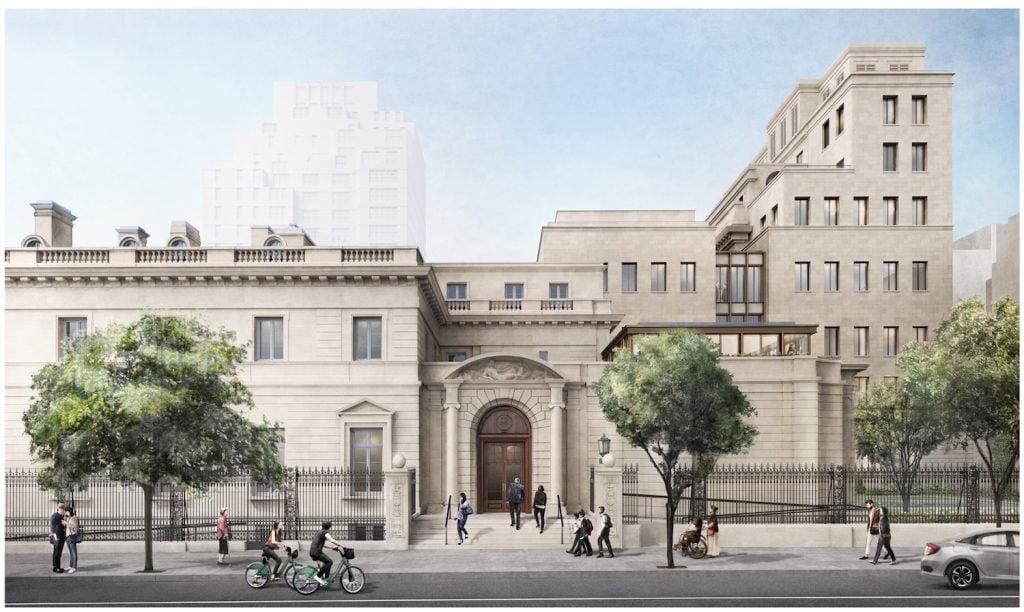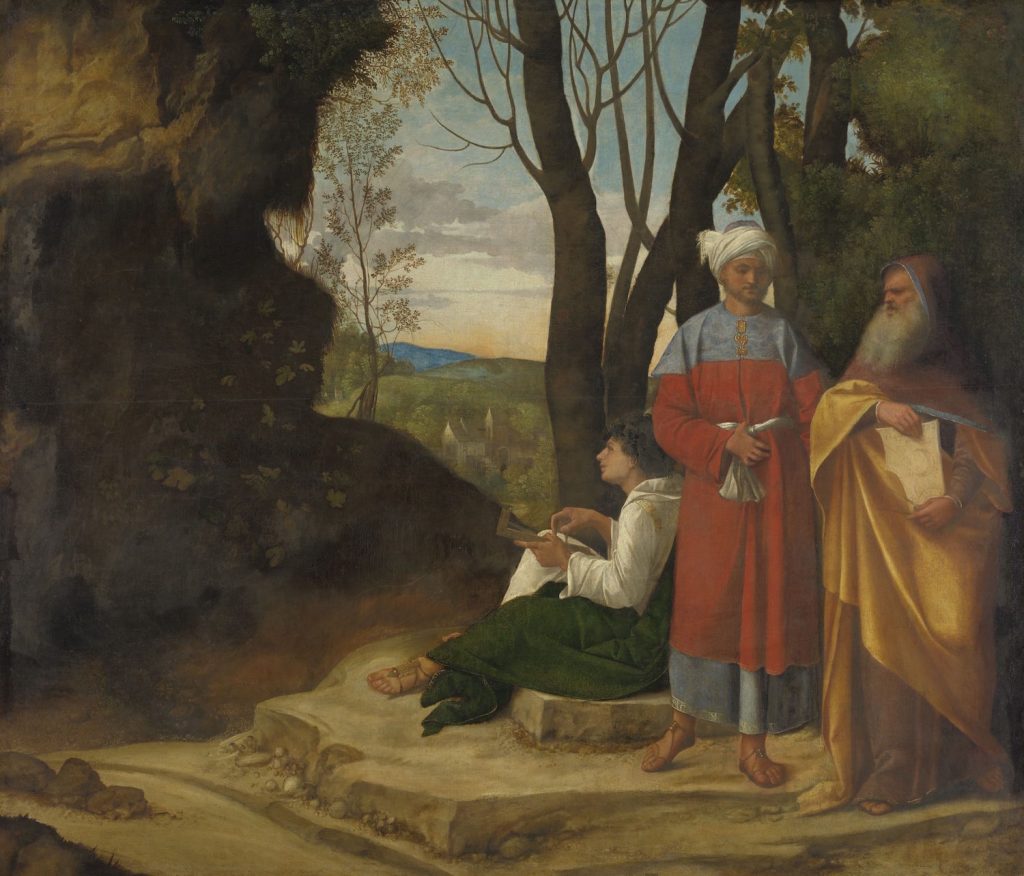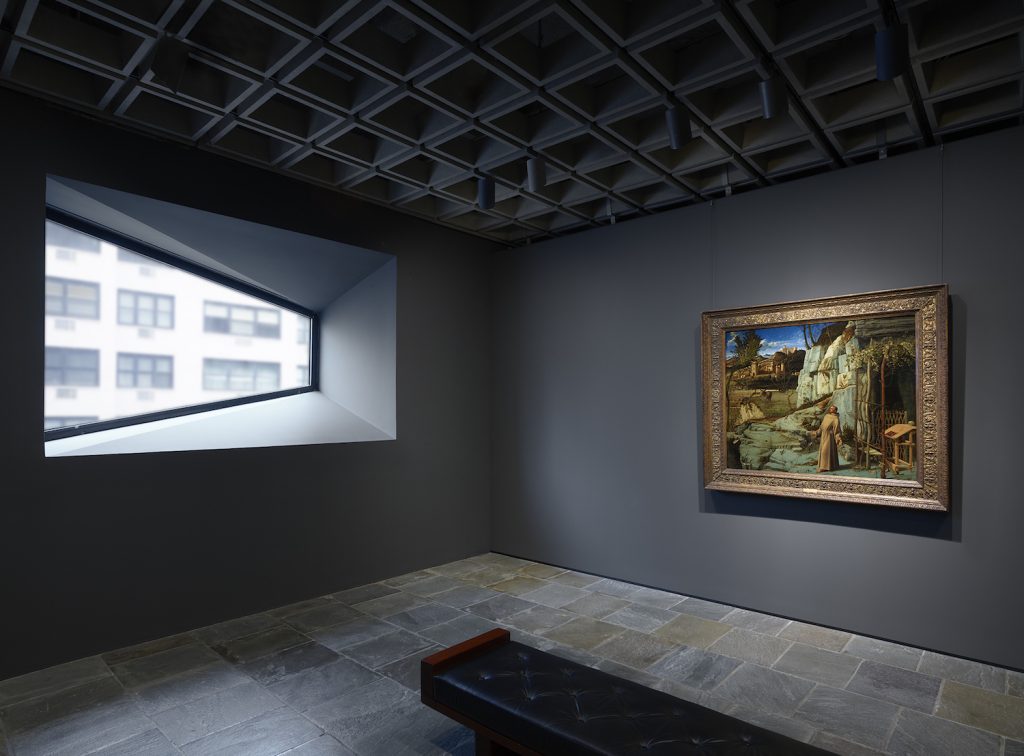Museums & Institutions
The Frick Collection Will Close Its Temporary Breuer Space and Reopen Its Newly Overhauled Mansion in 2024
The museum has lined up a number of landmark exhibitions before it bids farewell to its Breuer space.

The museum has lined up a number of landmark exhibitions before it bids farewell to its Breuer space.

Eileen Kinsella

After two-plus years of occupying a temporary home on Madison Avenue at the historic Breuer building, Manhattan’s beloved Frick Museum has announced it will be closing the space on March 3, 2024. It will spend the next several months winding down operations and preparing to return its priceless Old Master art collection and operations to its completely overhauled longtime home at the Frick Mansion at One East 70th Street. Though no exact date has been specified yet, museum leaders revealed for the first time to Artnet News that they will reopen the mansion to the public in late 2024.
“We realized that we are sure we are now going to be able to hit our target reopening date,” said Ian Wardropper, whose full title is Anna-Maria and Stephen Kellen director, in a phone interview with Artnet News. “All I know is that for sure it will be before the end of 2024.” After the March closure at the Breuer, there will be a gap of about six months where both sites are closed before the mansion reopens.
And it’s only fitting that after the twists and turns of the past few years—from vacating its longtime home to navigating a collection move at the height of the pandemic—the 85-year-old museum is leaving the Breuer building on a high note, with several landmark exhibitions and an exciting new contemporary “intervention” from a star artist.

Rendering of The Frick Collection from 70th Street. Photo courtesy of Selldorf Architects
For months, if not years, museum leaders and reps have been continuously peppered with questions about when it would leave the Breuer, the longtime home of the Whitney Museum, which still owns the building. For roughly two years, it was the site of the Metropolitan Museum of Art’s contemporary art focus, known as the Met Breuer. After the Met decided to vacate, the Frick moved its collection there in late 2020 and Frick Madison was born. The doors opened in early 2021.
Earlier, Wardropper called the opportunity “a real gift,” especially since it meant the Frick didn’t have to tuck its world-class collection away in storage for the years-long renovation of the Frick mansion.
Among the exciting initiatives that will mark the end of the Frick’s Breuer residence are a much-anticipated show of portraits by Barkley L. Hendricks, who passed away in 2017 and who has, in more recent years, been garnering overdue acclaim for his realist and postmodern paintings of Black Americans living in urban areas.
In June, the Frick will debut a site-specific mural it commissioned from Swiss artist Nicolas Party. The sought-after artist will create the work in response to Rosalba Carriera’s Portrait of a Man in Pilgrim’s Costume, an 18th-century pastel gifted to the Frick in 2020 by Vendome Press founder Alexis Gregory.
This is the second installation in the Frick’s popular “Diptych” series, each volume of which focuses on a single work from the collection, pairing an essay by a curator with a contribution from a contemporary figure. In 2019, Party organized “Pastel” at the FLAG Art Foundation, for which he created large pastel murals inspired by the work of various artists, both past and present. Party juxtaposed his own work with that of 18th-century French artists including François Boucher and Jean-Honoré Fragonard.
One of the pairings featured a portrait by Carriera, hung against his mural inspired by Fragonard’s “Progress of Love” series at the Frick. That show was what put the artist on the Frick’s radar, said Wardropper. “He’s really one of the most interesting artists working in this kind of historic medium of pastel,” he added.

Giorgio da Castelfranco, known as Giorgione (ca. 1477–1510), The Three Philosophers, (ca. 1508–9) Kunsthistorisches Museum, Vienna, Photo: KHM-Museumsverband
Last but not least, the museum is planning a Fall exhibition that “is a way of going back to our roots,” said Wardropper, and will home in on one of the most famous paintings in its collection, Giovanni Bellini’s St Francis In The Wilderness (1475–80). “One of the greatest works of that period that is not in our collection is by Giorgone, the famous Venetian artist who was kind of a predecessor of Titian.” The Frick has arranged to borrow Giorgione’s The Three Philosophers (1509) from the Kunsthistoriches Vienna and will present both paintings in the special near chapel-like room where the Bellini currently resides.
The Giorgione was commissioned by a Venetian named Contarini, and at one point those two paintings, “ours and the Giorgione, were in his collection in Venice in the beginning of the 16th century. And so for the first time in 400 years, we’re bringing these two paintings together,” said Wardropper. The paired paintings will be on view from November 9, 2023 through February 4, 2024.

Installation view of Giovanni Bellini, St Francis in the Wilderness (1475–80). Photo courtesy The Frick.
In exchange, the Frick is lending two important busts by 15th-century Italian sculptor Francesco Laurana to a major show that the Kunsthistoriches is holding this summer. It’s only because of a special dispensation the museum obtained during the temporary move and closure that it is allowed to loan to other institutions, as it did for the blockbuster Vermeer show currently on view at the Rijksmuseum in Asmsterdam.
Of obtaining the Giorgione loan, Wardropper said: “We had to be able to give them something really great in exchange so it worked out. We’re both happy.”
And while all this is going on, Frick leaders have been thrilled to see the progression of renovation at the East 70th Street mansion. With the massive exterior work approaching completion, Wardropper, who said he visits at least once a week, said leaders are turning their attention to the interior areas, towards matters such as choosing paint colors for various galleries and deciding on furniture placement.
When the Frick reopens, the public will be able to access its second floor for the first time in its history, and the museum is moving the famous Boucher room back to its original location on that level. A new short video featuring deputy director and chief curator by Xavier F. Salamon detailed the revitalization of the Frick Boucher Room.
There will also be new conservation laboratories and an auditorium with a state-of-the-art audio and visual system. “It’s just a complete overhaul of infrastructure,” said Wardropper. The museum is also seeking LEED status, a certification granted to green buildings.
Wardropper paused when asked if he is breathing a sigh of relief. “Until it’s done, especially having gone through the pandemic, things happen that you don’t plan for, but yes, I am,” he said. “The further along we get, the more I see we’ve passed some of the challenges; there are fewer unknowns.”
He is understandably looking forward to getting back to focusing on the institution and its storied collection, including exhibition programming. “After being in this desert of construction and city permits, we’re now getting back to the whole point of it, which is to improve our old house and give it the resources it needs for the future.”